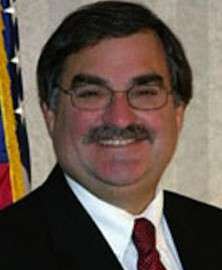It took federal agencies’ four years to go from introduction to implementation of the Digital Accountability and Transparency Act, so what will it take to get 2,300 grant-making programs and 3,200 procurement offices to do the same?
The Office of Management and Budget recommends three steps to help expedite the process: continue to standardize data, use auto-populating technology, and use IT open standards for developing any new tools needed along the way.
The recommendations are part of OMB’s recent report on the DATA Act’s two-part Section 5 pilot, which covers federal grants and federal contracts. The grants pilot ended, but the procurement side will continue through February.
“The procurement pilot demonstrates that burden is reduced and efficiencies are achieved when data already provided to the federal government is re-used,” OMB said. “The procurement pilot results also demonstrate that reporting can be streamlined when technology standards are open. The grants test pilots demonstrate that the following conditions can reduce recipients’ burden: (I) required reporting data elements are defined in a central open repository, (2) reported data is collected centrally, (3) data can be re-used and auto populated across government, and (4) available resources explain requirements and business processes where needed.”
Hudson Hollister, founder and executive director of the Data Coalition, told Federal News Radio his hope is that grant-making offices and contracting offices will see the benefit to standardized spending reports.
“It is really significant for us that the White House now says that we should have a comprehensive taxonomy for recipient reporting,” Hollister said. “This is the new infrastructure of grantee reporting and of contractor reporting and it means cheaper compliance for grantees and contractors, it means better transparency for the public, and it means much better management and analytics for the government.”
Hollister acknowledged, however, that getting grant-making and contracting offices on board will be a heavy lift.
“The DATA Act was very hard; the Treasury Department had to come up with the DAIMS [DATA Act Information Model Schema], had to force all of the agencies, over 100 of them, to report information following the DAIMS,” Hollister said. “The same challenge is going to happen in grantee and contractor reporting. Someone’s going to have to say, ‘This is the taxonomy folks. You have to follow it,’ and then someone’s going to have to force all 2,300 of those grant-making program offices, and however many contract officers there are, procurement offices, force them all to follow it and I’m sure that is going to be a big challenge.”
Double the DAIMS power
The Department of Health and Human Services handled the grants side of the pilot, while OMB’s Office of Federal Procurement Policy led the procurement side with the help of the General Services Administration’s 18F, and looked at certified payroll data.
Data collection for the pilots began in March. The report covers reporting and analysis through July.
“The objective of the procurement pilot was to explore burden reduction by building and testing an online proof of concept tool,” OMB said in its report. “This application would centralize collection of all reporting requirements under the Federal Acquisition Regulation (FAR), rather than require contractors to submit reports to multiple locations and in multiple formats. Contractors would now report information only once and in a single location. The goals of the grants pilot were to find opportunities to create new common data standards, to build tools to increase efficiencies in reporting, and to provide resources for lowering the administrative burden on awardees and the government workforce.”
With one standardized way of reporting, while offices might still submit varying information, all of it would be in one “data dictionary” and the software could differentiate and automate that information, Hollister said.
And whoever is in charge of that taxonomy isn’t starting from scratch. They can — and should — start with the DAIMS, Hollister said.
“It should match the DAIMS, rather than being built independently,” Hollister said. “For example, a grant reporting taxonomy should use the same data fields as the DAIMS to identify the funding agency, recipient, and award identification of each grant. That way, information reported by grantees using this new taxonomy could be automatically searched together with the information that is already being reported by agencies under the DATA Act.”
Hollister said one of the biggest problems when it comes to managing grants and contracts, is that the information agencies report on their grants and contracts don’t match up with what grantees and contractors report in their books.
Using DAIMS, that information could be checked on both sides.
“Make sure whatever they build is built off the DAIMS,” Hollister said. “That’s going to make everything doubly powerful. Imagine if all of these thousands of different forms that grantees have to file, imagine if that whole dataset was instantly interoperable with all the stuff that agencies are reporting.”
As for who is in charge of creating that “comprehensive taxonomy,” Hollister said ideally OMB would give a strong mandate to build a common data structure, “to build the common data structure, test it, and impose it across all of the government’s grant-making program offices.”
Copyright
© 2024 Federal News Network. All rights reserved. This website is not intended for users located within the European Economic Area.
